In ancient Rome, women were traditionally seen through the lens of their roles as wives, mothers, and caretakers of the household. This narrow perspective shaped much of historical scholarship, often overlooking the varied ways women contributed economically beyond domestic duties. The economic role of women in Ancient Rome beyond the home remains an area deserving closer examination.
Understanding and acknowledging these broader economic contributions challenges long-held perceptions about women’s place in society. Recognizing female agency reveals a more complex picture of women’s influence within Roman social and economic structures, enriching our comprehension of ancient history and gender dynamics.
It’s important to note that the spectacle of ancient Rome—gladiators, chariot races, and theaters—was not just entertainment but a crucial part of society that had significant effects on social relationships and political authority. This is just one aspect of the fascinating world of Ancient Rome, which spans from its origins as a Republic to its transformation into a mighty Empire.
The legacy of Ancient Rome remains a cornerstone of Western civilization. Its influence can be seen in various aspects of modern society, as explored in our article about how it shaped Western civilization.
Moreover, agriculture during the Roman Republic and Empire was a crucial driver of Rome’s economic and social development. This sector extended beyond mere food production—it played a significant role in economic growth.
Lastly, understanding the broader implications of Roman Law is essential for grasping the foundations of contemporary laws, as these principles are still relevant in various legal systems today.
Legal Status and Property Rights of Roman Women
In ancient Rome, the legal status of women was complex, with a mix of rights and restrictions that greatly influenced gender dynamics. Their citizenship status often determined their limited political participation. However, the introduction of the Twelve Tables, an important milestone in the development of Roman law, brought about a significant change. These laws were the first attempt to codify the complex and often arbitrary legal practices of ancient Rome.
Property Ownership Rights
Despite these limitations, women were granted certain property ownership rights, including land inheritance and management. This aspect of their legal status allowed them to engage in property transactions, although within a restricted framework.
Emergence of Emancipated Women
During this period, the concept of emancipated women began to emerge. These women enjoyed a degree of legal independence, which allowed them to own property and engage in financial transactions without male oversight. This shift in property rights also opened opportunities for women to act as independent agents in court, providing several examples where they effectively exercised their property rights.
Limitations on Legal Autonomy
However, it’s important to note that these advancements were not uniform across all strata of society. The legal autonomy enjoyed by some emancipated women was often an exception rather than the rule, highlighting the intricate relationship between gender and citizenship in ancient Rome.
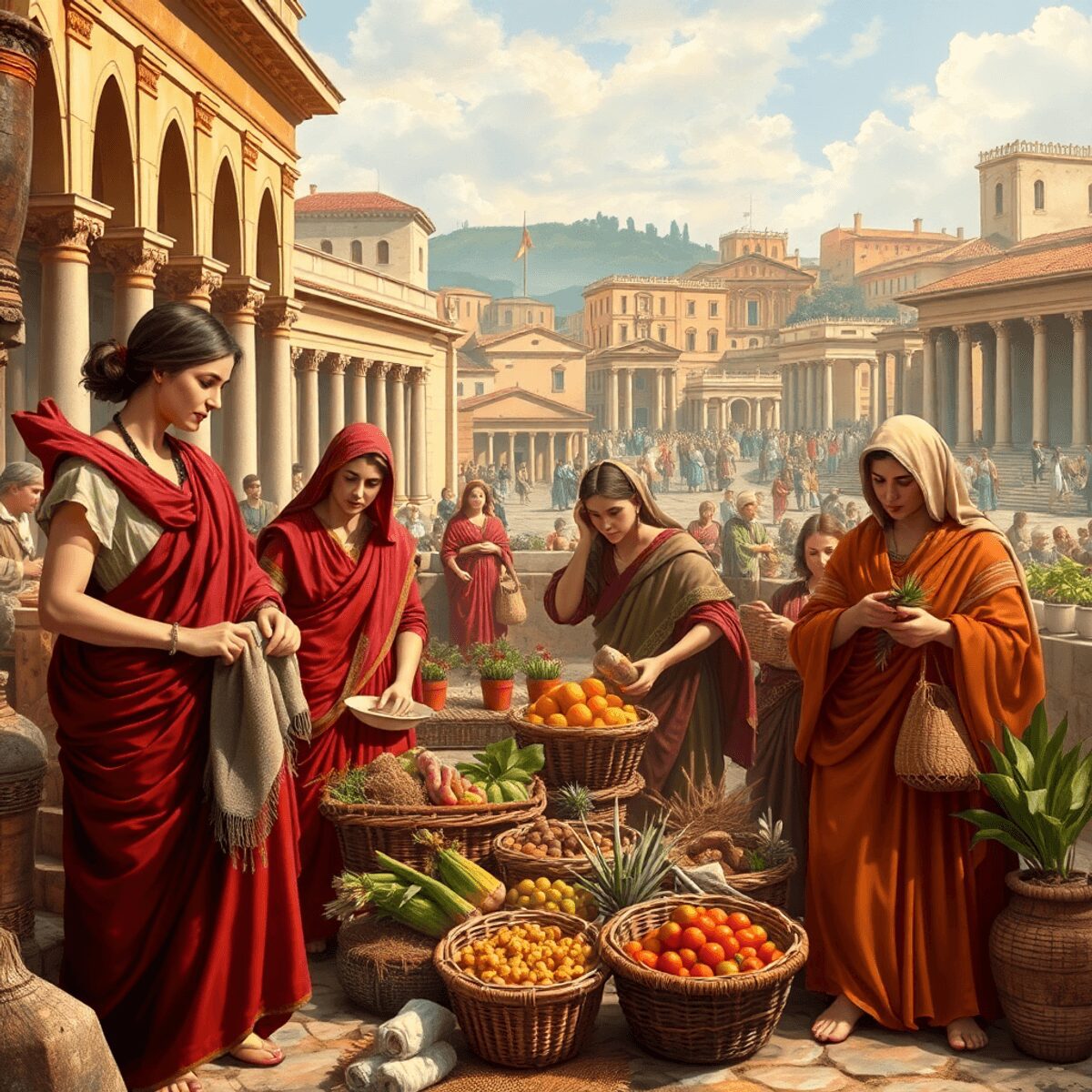
Economic Activities Beyond the Household
Managing household finances was seen as an essential economic role for women, extending their influence beyond domestic chores. This economic participation often included aspects of business management.
Women’s involvement in property transactions and estate management showcased their financial agency. They even engaged in trades or businesses, further emphasizing their role in the economy.
Historical records are filled with specific examples demonstrating women’s active participation in the economy. Notably, there are legal cases where women represented themselves financially, highlighting their competence and assertiveness in economic matters.
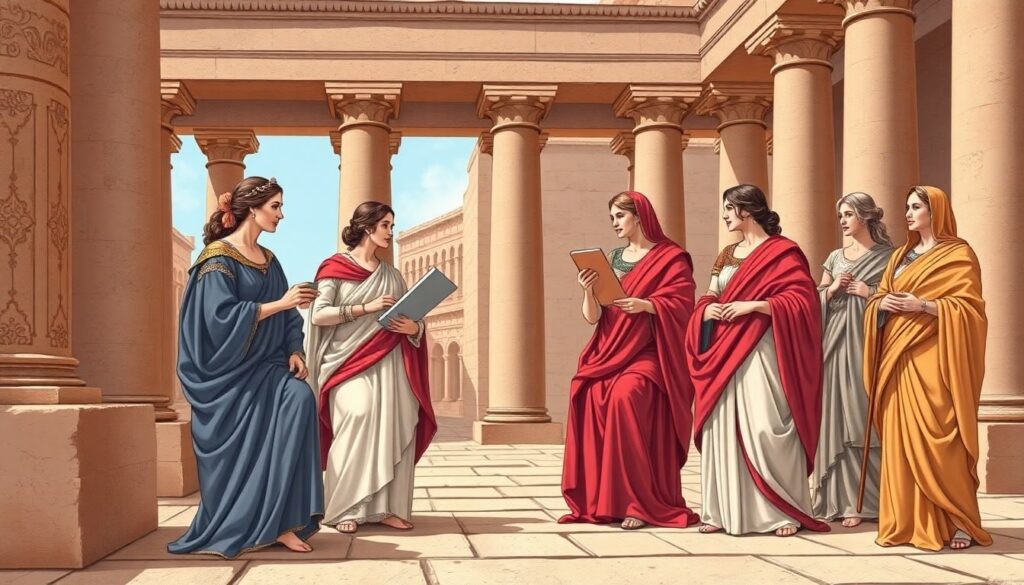
Influence of Elite and Noble Women in Economic Networks
The role of elite women in shaping economic networks during ancient times is often understated. Wealthy women, particularly those from patrician families, played a significant role in private negotiations and family connections that heavily impacted the economy. These elite women were not merely passive recipients of their family’s wealth; they actively participated in economic alliances and decisions.
Education as a Key Factor
A key factor that influenced their ability to engage in such economic decision-making processes was their level of education. The more educated these women were, the more likely they were to influence economic outcomes. Education provided them with the necessary skills and knowledge to navigate complex economic landscapes, thus enhancing their social influence within their families and beyond.
Case Study: Livia
To illustrate this point, we can look at the case study of Livia, a prominent figure in Roman history. Livia’s behind-the-scenes economic influence on behalf of her family is a testament to the significant role that elite women played in the economic networks of ancient Rome. Her story serves as a compelling example of how education and social status combined to empower women like her to impact economic decisions significantly.
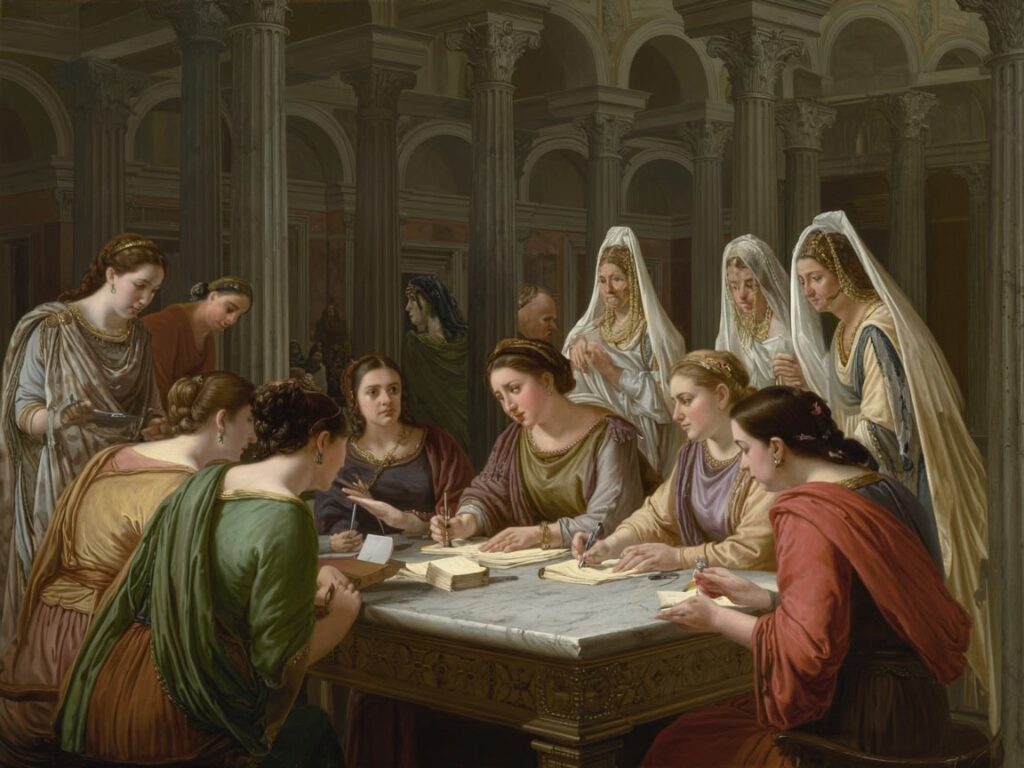
Marriage as an Economic and Political Tool
Marriage in ancient Rome was more than a personal relationship; it was a calculated economic strategy designed to strengthen political alliances and consolidate wealth between families. These marriage alliances served as instruments to secure social standing, influence, and property control.
The Significance of Family Names
Roman women retained their family names after marriage, which was significant for their identity and property rights. Unlike many modern traditions where women adopt their husband’s name, Roman customs allowed women to maintain a direct link to their birth family. This practice reinforced their legal status concerning inheritance and property ownership. The retention of the family name often symbolized ongoing allegiance to the natal household, preserving women’s economic ties and potential claims on family assets.
Social Class Dynamics in Ancient Rome
However, the daily life in ancient Rome varied greatly among different social classes. The elite enjoyed certain privileges that were not accessible to the majority of the population, particularly the plebeians. Understanding these dynamics is crucial as they represented the majority and significantly influenced the development of political and economic structures in Rome.
Divorce Laws and Women’s Economic Interests
Divorce laws in ancient Rome were legally permissive and socially accepted, particularly among the elite. Divorce could be initiated by either spouse without complex legal hurdles, reflecting a pragmatic approach to marriage as a flexible alliance rather than a permanent bond. The economic consequences of divorce for women varied:
- Women often retained dowries or received settlements that protected their financial interests.
- Divorce could affect women’s standing within both families but did not automatically strip them of property rights.
- Some women used divorce strategically to renegotiate economic or social positions.
The capacity for Roman women to enter into and exit marriages with relative legal freedom highlights their active role in economic negotiations. These dynamics position marriage not simply as a domestic institution but as a crucial mechanism influencing wealth distribution and political power across Roman society.
The Interplay Between Marriage, Wealth, and Political Power
This interplay between marriage, wealth, and political power can be further understood by examining the broader political system of ancient Rome. The shift from monarchy to a republican system around 509 BCE marked a critical transition that had enduring impacts on modern political structures.
Moreover, this period also witnessed remarkable advancements in various fields including engineering, which played a significant role in connecting far-flung regions of the empire, ensuring effective governance and cultural exchange.
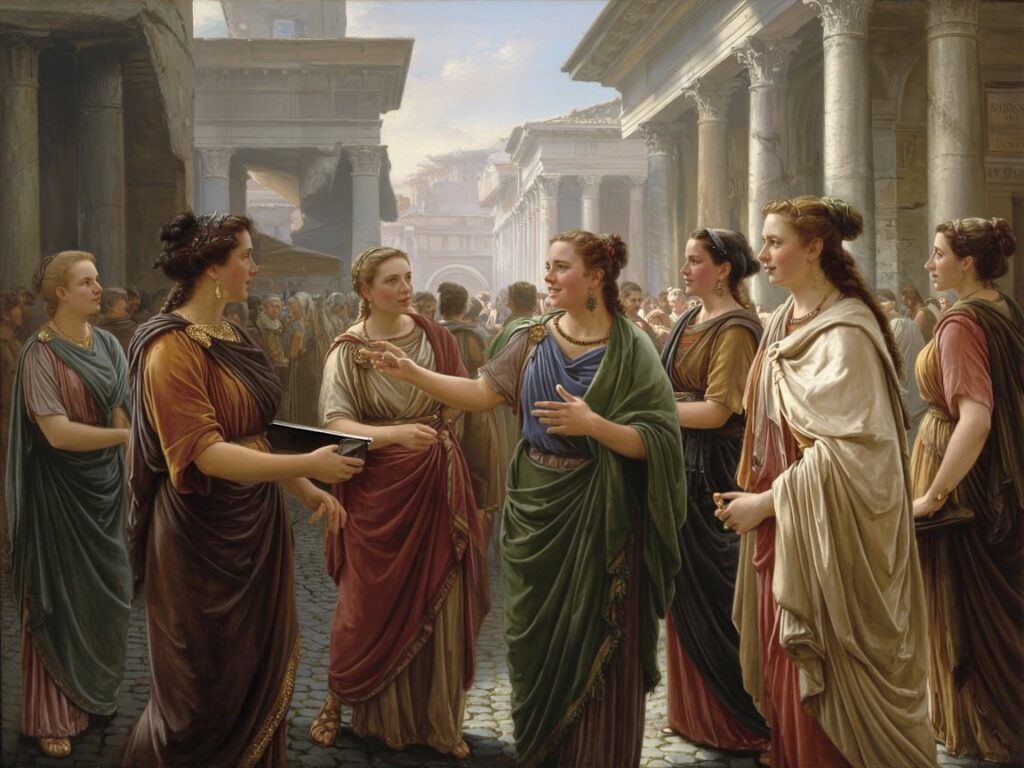
Special Roles with Economic Implications: Vestal Virgins and Other Exceptions
The Vestal Virgins held a unique position in Roman society, combining religious significance with economic independence that was rarely granted to women. Chosen between the ages of six and ten, these priestesses served for 30 years, dedicating themselves to maintaining the sacred fire of Vesta. Their religious responsibilities bestowed upon them advantages that distinguished them from ordinary Roman women.
Unique Status and Privileges
The Vestal Virgins enjoyed several privileges that were uncommon for women in Roman society:
- Legal and financial independence: Vestal Virgins were emancipated from the usual male guardianship (tutela), granting them the rare ability to own property outright and manage their own finances.
- Property rights: They could acquire land, enter contracts, and receive inheritances without male intervention. This level of autonomy contrasted sharply with most other women, whose legal actions were often limited or mediated by male relatives.
- Social protections: Their sacred position protected them from certain legal punishments and allowed them special rights, such as the power to pardon condemned prisoners simply by touching them.
Economic Implications of Sacred Duties
The economic impact of Vestal Virgins extended beyond personal benefits. They played a role in:
- Wealth management: The temple of Vesta controlled substantial assets including land and treasures. The Vestals supervised these holdings, giving them influence over significant economic resources.
- Community trust: Their purity and dedication inspired public confidence. This trust underpinned their authority in managing temple finances and negotiating on behalf of religious institutions.
- Political symbolism: As living symbols of Rome’s well-being, they indirectly supported political stability, which was essential for economic prosperity.
Other exceptions in Roman society occasionally mirrored aspects of the Vestals’ autonomy. For example, some freedwomen or priestesses of other cults also held property and exercised financial agency. However, none matched the combination of sacred duties and economic privileges unique to the Vestal Virgins.
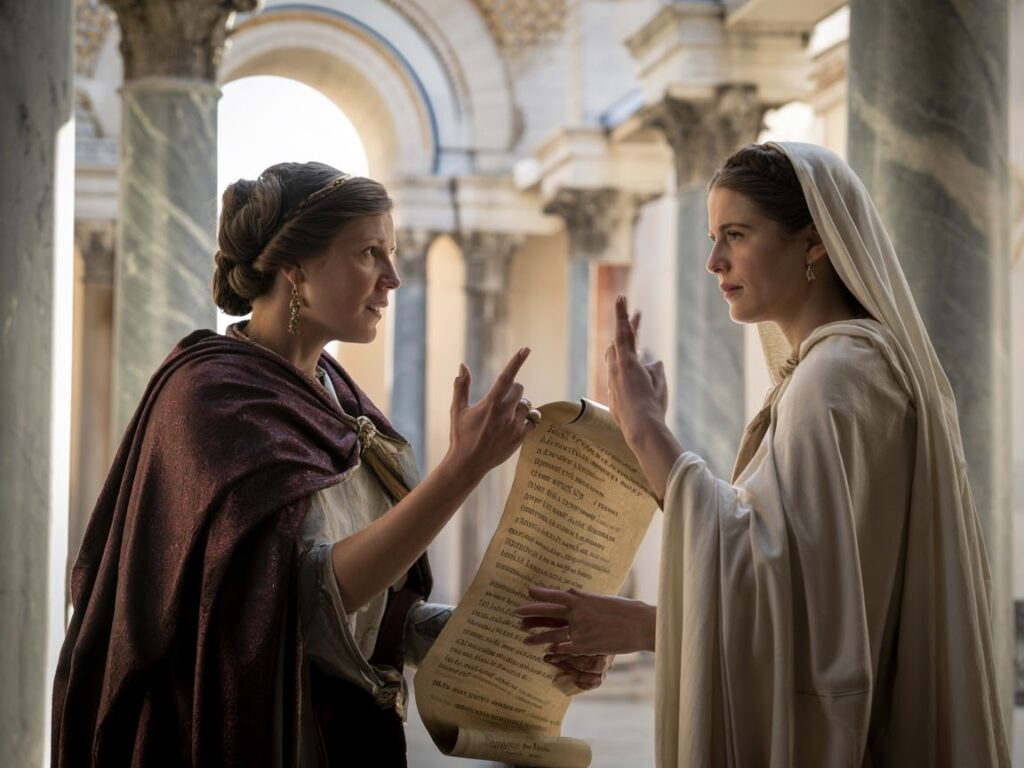
Impact of Augustus Laws on Women’s Economic Role
Key Provisions of Augustus Laws
Key provisions included:
- Marriage Rewards: Citizens who married and had multiple children received privileges such as tax breaks and priority in public appointments. Women who bore three or more children gained legal privileges, including exemption from certain guardianship restrictions.
- Adultery Regulations: The Lex Julia de adulteriis coercendis criminalized adultery, imposing severe penalties on women found guilty while also targeting their partners. This law heightened control over women’s sexual behavior but indirectly affected their economic security by linking morality with legal status.
- Divorce Restrictions: Divorce became more regulated, requiring formal procedures that affected property settlements between spouses. Women’s economic positions within households were influenced based on these changing divorce norms, impacting inheritance rights and dowry returns.
These legislative measures reshaped women’s social standing by intertwining morality, family structure, and economic rights. The laws reflected an attempt to reinforce traditional family values but also acknowledged women as active participants in societal stability through their reproductive and legal roles.
The Economic Role of Women in Ancient Rome Beyond the Home was thus deeply intertwined with Augustus’ legal reforms, which expanded and constrained female agency simultaneously. However, it’s important to note that these laws were implemented within a broader societal context where religion played a crucial role in shaping people’s lives and influencing politics, culture, and social structures.
Moreover, the architectural landscape of ancient Rome, characterized by masterpieces of engineering, served as a testament to the power and cultural identity of the Romans during this period.
Lastly, while women navigated these economic changes influenced by Augustus’ laws, other segments of society such as the gladiators experienced their own unique challenges and transformations within the complex social system of ancient Rome. Their story is a compelling narrative that explores whether they were heroes or victims of Roman entertainment.
Conclusion
Roman women played a variety of economic roles that went beyond traditional household tasks. They had economic agency through activities such as owning property, participating in legal matters, managing businesses, and having influence within elite social circles. These actions challenge the common belief that women in ancient Rome were simply passive figures limited to the home.
Understanding this broader involvement of women in the economy enhances our understanding of the legacy of ancient Rome. It reveals the complexity of gender dynamics and highlights the significant contributions women made to the economic fabric of Roman society.
Recognizing women’s historical agency offers valuable perspectives that resonate with modern discussions about gender equality and economic empowerment.
Exploring The Economic Role of Women in Ancient Rome Beyond the Home reveals important truths about female independence and influence, promoting a more nuanced view of history and society today. This exploration is crucial for understanding not only the societal structure but also the rise and fall of the Roman Empire, which has left a lasting impact on the world.
Furthermore, acknowledging women’s contributions can provide insights into the enduring influence of ancient Roman legal principles on contemporary legal systems, a topic that reflects the adaptability and relevance of these principles over time.
Additionally, it is fascinating to observe how Stoicism, a philosophical school founded in ancient Greece, influenced Roman thought, shaping societal norms including those related to gender roles.
Lastly, we cannot overlook the role of the Roman army in maintaining and expanding the empire, or the rich artistic expressions that characterized this period, both of which are essential for understanding the complete picture of Roman history and its legacy.

